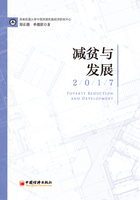
本章参考文献
[1] 习近平.在中央扶贫开发工作会议上发表的讲话[EB/OL].http://www.gov.cn/xinwen/2015-11/28/content_5017899.htm.
[2] 国家民委.2014年少数民族地区农村贫困监测结果[EB/OL].http://www.seac.gov.cn/art/2015/4/15/art_31_225897.html.
[3] [美]塞德希尔·穆来纳森,埃尔德·沙菲尔.稀缺:我们是如何陷入贫穷与忙碌的[M].杭州:浙江人民出版社,2014:15,183.
[4] 世界银行.2009年世界发展报告:重塑世界经济地理[R].北京:清华大学出版社,2009:3.
[5] 郑长德,主编.中国少数民族地区经济发展报告(2013)[M].北京:中国经济出版社,2014:24.
[6] 郑长德.中国少数民族地区包容性绿色发展研究[M].北京:中国经济出版社,2016:56.
[7] Abhijt V. Banerjee and Esther Dufflo. Poor Economics: A Radical Rethinking of the Way to Fight Global Poverty[M]. New York: Public Affairs, 2011.
[8] Ali, I., and J. Zhuang. Inclusive Growth toward a Prosperous A-sia: Policy Implications[R]. ERD Working Paper No. 97, Economics and Research Department, Asian Development Bank, Manila.
[9] Kate Bird, Kate Higgins and Dan HarrisSpatial poverty traps: An overview[DB/OL]. ODI Working Paper 321, www.odi.org.uk, 2010.